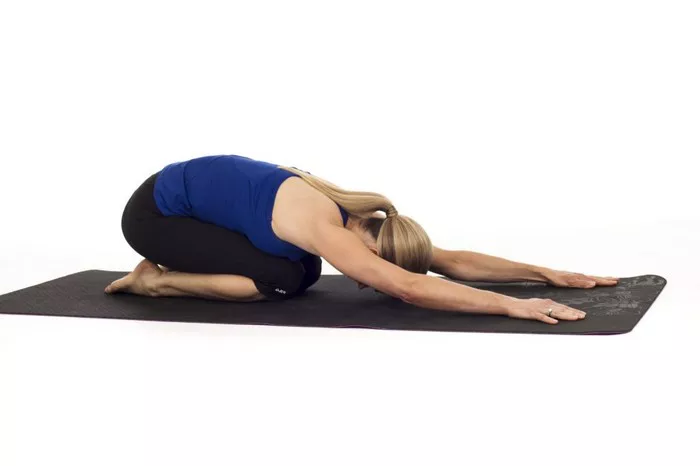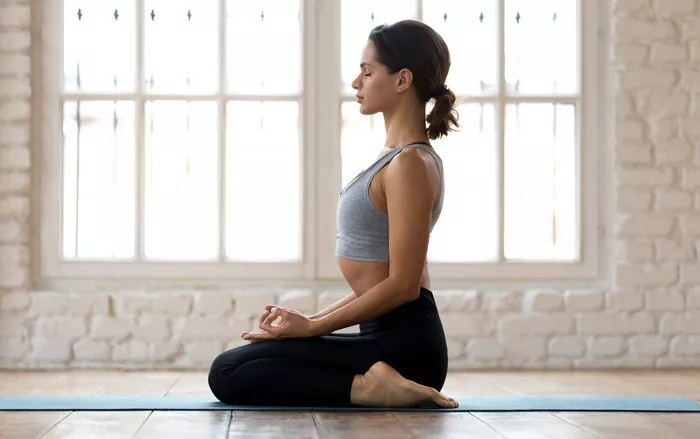Kayakalpa, a term derived from the ancient texts of Yoga, refers to an advanced yogic practice designed to rejuvenate the body, mind, and spirit. Rooted in the traditions of Ayurveda and Hatha Yoga, Kayakalpa is often regarded as a powerful technique for reversing the effects of aging, promoting longevity, and enhancing vitality. In this article, we will explore the benefits of Kayakalpa, how it works, its principles, and why it has gained significant attention in recent years.
What is Kayakalpa?
Kayakalpa, often referred to as “body rejuvenation” or “life renewal,” is a holistic approach to health and wellness that aims to reverse the aging process. It involves a combination of yoga postures, breath control (pranayama), meditation, and the use of specific dietary practices and herbal remedies. The ultimate goal is to rejuvenate the physical body, increase energy levels, enhance mental clarity, and foster spiritual growth.
The concept of Kayakalpa can be traced back to the teachings of ancient yogis and Ayurvedic practitioners, particularly in India. Kayakalpa is not merely about reversing the signs of aging, but also about attaining a state of inner balance, vitality, and heightened consciousness. While modern science has made significant strides in understanding the aging process, the principles of Kayakalpa offer an alternative, deeply spiritual, and comprehensive approach to enhancing health and longevity.
How Does Kayakalpa Work?
Kayakalpa operates on the principle that the human body is a complex and dynamic system, continually exposed to external influences such as pollution, stress, unhealthy food, and negative emotions. These external factors lead to the accumulation of toxins (ama) in the body, which, in turn, accelerates aging and leads to diseases.
The key to reversing this process lies in detoxification, rejuvenation, and the activation of the body’s natural healing mechanisms. By employing specific yogic techniques and natural remedies, Kayakalpa helps clear the body of toxins, replenish essential nutrients, and restore the balance of the body’s energies. This is achieved through the following methods:
1. Pranayama (Breathing Techniques)
Breath control is a central component of Kayakalpa. Specific pranayama techniques are employed to cleanse the respiratory system, improve oxygenation of the blood, and stimulate the flow of energy (prana) throughout the body. Pranayama helps to calm the nervous system, reduce stress, and promote mental clarity.
One of the key pranayama practices used in Kayakalpa is Kapalbhati, a cleansing breath technique that detoxifies the lungs and energizes the body. Another important pranayama is Nadi Shodhana, or alternate nostril breathing, which helps balance the right and left hemispheres of the brain and promotes emotional and mental harmony.
2. Asanas (Yoga Postures)
The physical postures or asanas practiced in Kayakalpa are aimed at stimulating the body’s vital organs, improving flexibility, and strengthening the musculoskeletal system. These asanas are designed to open energy channels (nadis), release blockages, and allow the free flow of prana.
Some of the most effective asanas for rejuvenation in Kayakalpa include Sarvangasana (shoulder stand), Halasana (plow pose), Viparita Karani (legs-up-the-wall pose), and Bhujangasana (cobra pose). These poses not only activate the body’s internal organs but also help improve circulation, enhance lymphatic drainage, and promote relaxation.
3. Detoxification and Cleansing Practices
Kayakalpa emphasizes the importance of internal cleansing to rejuvenate the body. Techniques such as Kriyas (cleansing practices), including Neti (nasal cleansing), Dhauti (stomach cleansing), and Basti (colonic irrigation), are integral to the process of detoxification.
These practices remove accumulated toxins from the body, improve digestion, and restore a healthy balance of the body’s internal systems. Detoxifying the body helps prevent the onset of diseases and slows down the aging process.
4. Dietary Practices and Herbal Remedies
Nutrition plays a crucial role in Kayakalpa. A balanced diet rich in fresh, organic, and nutrient-dense foods supports the body’s natural detoxification and rejuvenation processes. The diet typically includes a variety of fruits, vegetables, whole grains, nuts, seeds, and legumes, which provide essential vitamins, minerals, and antioxidants.
Herbal remedies, often prescribed in Ayurveda, are also used to support the rejuvenation process. Herbs such as Ashwagandha, Shatavari, Turmeric, and Ginseng are believed to possess powerful rejuvenating properties that enhance vitality, support immune function, and reduce the effects of aging.
5. Meditation and Mindfulness
Meditation is a cornerstone of Kayakalpa, as it helps quiet the mind, reduce stress, and enhance mental clarity. By cultivating a state of mindfulness, practitioners can deepen their awareness of the present moment and create a sense of inner peace.
Meditation practices such as Dhyana (concentration) and Trataka (candle gazing) help calm the nervous system, increase focus, and improve the quality of sleep. These practices also support emotional well-being and prevent the negative effects of chronic stress on the body.
Benefits of Kayakalpa
Kayakalpa offers numerous benefits, both physical and mental. Here are some of the most significant advantages of incorporating Kayakalpa practices into your life:
1. Reverses the Aging Process
One of the primary benefits of Kayakalpa is its ability to slow down or even reverse the aging process. Through detoxification, rejuvenation, and the activation of the body’s self-healing mechanisms, Kayakalpa helps to restore the body’s youthful vitality. The combination of pranayama, asanas, and cleansing practices supports cellular regeneration, boosts the production of collagen, and improves the elasticity of the skin.
2. Boosts Energy and Vitality
Kayakalpa helps restore energy levels by promoting the free flow of prana (life energy) throughout the body. The specific practices involved in Kayakalpa stimulate the body’s internal energy system, invigorating the cells and improving overall vitality. Practitioners often report feeling more energized, alert, and mentally sharp after consistent practice.
3. Improves Mental Clarity and Focus
The combination of meditation, pranayama, and asanas in Kayakalpa contributes to enhanced mental clarity, focus, and concentration. By quieting the mind and reducing mental chatter, Kayakalpa helps practitioners cultivate greater mindfulness and cognitive function. This mental clarity leads to improved decision-making, creativity, and overall well-being.
4. Enhances Physical Health and Flexibility
The physical postures practiced in Kayakalpa improve flexibility, strengthen the muscles, and support joint health. These asanas also promote proper alignment, improve circulation, and stimulate the flow of oxygenated blood to the internal organs. As a result, practitioners experience greater physical strength, improved posture, and reduced pain and stiffness in the body.
5. Detoxifies the Body and Prevents Diseases
Through various cleansing techniques, Kayakalpa helps remove toxins from the body and restore balance to the digestive, circulatory, and respiratory systems. Regular detoxification reduces the risk of chronic diseases, strengthens the immune system, and enhances overall health. The practice of Kayakalpa is particularly beneficial for those suffering from conditions such as digestive issues, skin problems, fatigue, and stress-related disorders.
6. Promotes Emotional Balance and Stress Relief
Kayakalpa also has profound effects on emotional health. The practice helps reduce stress, anxiety, and depression by promoting a deep sense of relaxation and inner peace. Meditation and pranayama are particularly effective in calming the nervous system and enhancing emotional stability. Practitioners often report feeling more balanced, resilient, and emotionally grounded after incorporating Kayakalpa into their lives.
7. Improves Sleep Quality
Kayakalpa practices help regulate the body’s circadian rhythms, improving sleep quality and duration. The relaxation techniques and mindful breathing used in Kayakalpa induce a state of deep relaxation, making it easier to fall asleep and stay asleep. A good night’s rest is essential for cellular repair, immune function, and overall well-being.
8. Promotes Spiritual Growth and Self-Realization
Finally, Kayakalpa is not just about physical rejuvenation— it is also a powerful tool for spiritual growth. The practices of meditation, mindfulness, and breath control help practitioners connect with their higher selves and experience greater self-awareness. As a result, Kayakalpa supports the journey of self-realization, inner peace, and spiritual awakening.
Conclusion
Kayakalpa is an ancient yogic practice that offers a comprehensive approach to health, vitality, and well-being. Through its combination of yoga postures, breath control, meditation, detoxification, and herbal remedies, Kayakalpa promotes the rejuvenation of the body and mind. It offers a multitude of benefits, including reversing the aging process, boosting energy levels, enhancing mental clarity, and promoting emotional balance.
While Kayakalpa may seem like an esoteric or mystical practice to some, it is rooted in practical techniques that have been honed over thousands of years. By adopting the principles of Kayakalpa, individuals can unlock their true potential, enhance their health, and experience a greater sense of vitality and spiritual fulfillment. Whether you seek physical rejuvenation, mental clarity, or emotional balance, Kayakalpa offers a holistic approach that addresses all aspects of human well-being.
Related Topics:



















